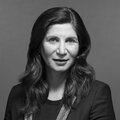Published in the New York Daily News.
The NYPD has done a tremendous job keeping us safe in the decade since 9/11. But recent reports call into question some of the tactics it may use – tactics that may pose a risk to both our safety and our right to live free of undue government scrutiny.
According to a recent, high profile investigation by the Associated Press, the department, possibly working in collaboration with the CIA, mapped the city’s Muslim communities and sent informants and undercover officers to monitor the daily lives of residents.
The police watched where Muslims ate, where they prayed, even where they got their hair cut. They also targeted Muslim students at city colleges, Pakistani cab drivers and Muslim religious leaders.
These revelations have led many to ask questions – and prompted legal efforts to find out the precise extent of NYPD surveillance. Among those looking into the practices is the Brennan Center at NYU Law School, for which I work. Even the CIA has opened an internal investigation on the extent of its collaboration with city police.
Critics say we should back off and let the NYPD do its job; we’re safer from terrorism and should be grateful.
Wrong. The AP’s investigation, by all accounts, was credible. The supporting evidence released seems sound. If true, these tactics could make us less safe – because if law-abiding Muslim New Yorkers don’t trust the NYPD, they will be less inclined to provide tips and other vital information needed to prevent another attack.
The NYPD may also have overstepped its legal boundaries, including the requirements of the modified Handschu consent decree, federal court standards that constrain its investigations of political activity. And the department may be violating prohibitions on ethnic profiling enshrined in city law and the police department’s own regulations, not to mention constitutional guarantees.
So what do we want and deserve to know?
First, we want to know if the NYPD is following court-imposed procedures governing how it pursues leads in sensitive cases. This is hardly a novel request: Just this summer, in response to a request from the New York Times, the FBI released documents that allowed for a comparable assessment of its procedures.
Second, we would like more information about the NYPD’s demographic “mapping” program. In a recent hearing before the City Council, Police Commissioner Ray Kelly conceded that the police were conducting such mapping, but claimed that they did so on a geographic – rather than ethnic or religious – basis. This issue is easily resolved by releasing the relevant documents. There should be nothing controversial about such a request; the FBI has released hundreds of pages of information on its own mapping programs.
Third, we want to know how the NYPD uses informants. Since this type of information regularly comes out at criminal trials, it surely cannot be so hush-hush that none of it can be shared with the public. Any particularly sensitive information can be redacted in a way that balances the public’s need to know with the need for operational secrecy.
The NYPD – which has the largest local intelligence gathering operation in the country – cannot be permitted to be more opaque on these matters than the nation’s top law enforcement and spy agencies.
While some aspects of intelligence gathering must remain secret, our democracy is built on the principle that information about governmental actions should be available to the people so that we can hold government accountable. Our request for information from the NYPD simply seeks to put this principle into practice.
